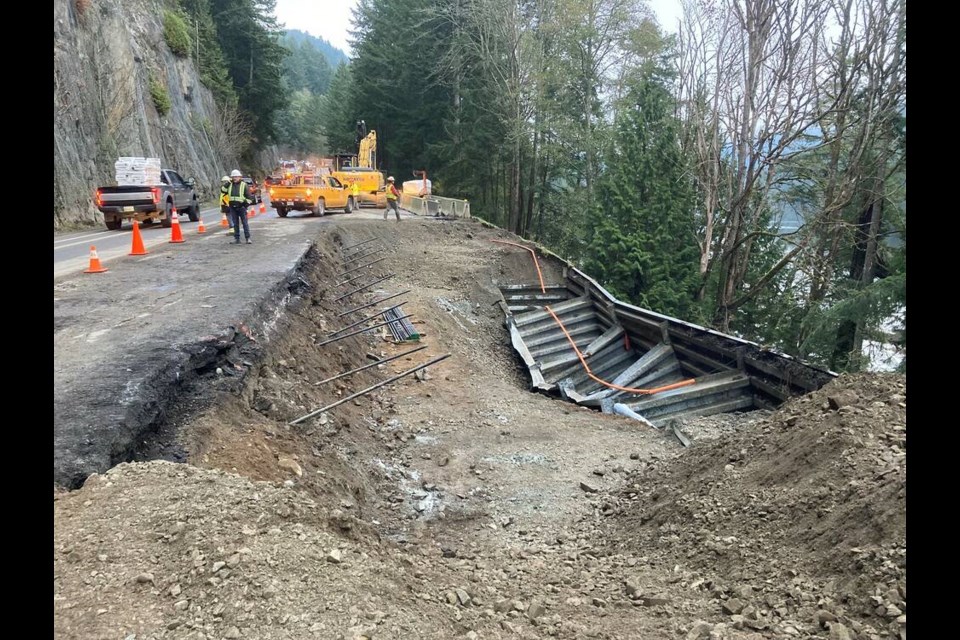Temporary fixes to the Tunnel Hill section of the Malahat Drive easily handled recent heavy rains after the stretch was badly damaged by last November’s downpours and flooding.
It was a good first test, said Janelle Staite, the Transportation Ministry’s deputy director for the south coast region, who noted the contractor in charge of the permanent repair job now underway ensured all the drainage avenues were cleared.
“So the ditches were moving water as they should, the holes in the barriers on the side of the road were moving water as they should, so water was going where it should.”
Last November, heavy rains washed out approximately 50 metres of the northbound lane, damaged a culvert outlet and compromised several sections of a retaining wall along the highway, about a kilometres north of Finlayson Arm Road. Staite said the culvert failure triggered a “sort of domino effect.”
Even though the permanent repair job only started in the summer, crews have already replaced the failed culvert with a larger new temporary one with enough capacity to weather “any sort of significant rain event that we’ll experience until the construction is finished,” Staite said.
“Certainly with having that temporary culvert in place, it leaves us feeling really confident that along with the due diligence of keeping the site and the drainage appliances clear, that things will flow through there as they should and the site will remain stable throughout construction this winter.”
The permanent repairs began in July, with an expected completion date of next summer. The total project budget is $24 million, with a construction contract awarded to Windley Contracting worth $14.9 million.
The work includes restoring approximately 50 metres of the northbound lane north of Finlayson Arm Road, repairing damage to existing drainage and slope stability, replacing an 80-metre retaining wall and beefing up drainage capacity to handle more extreme-weather events.
Staite said the work so far has been focused on getting the temporary culvert in place and building a temporary retaining wall to stabilize the site and allow for work to begin on the permanent fixes.
Much of the work is expected to be out of sight of passing motorists, on the east side of the highway and the downhill slope toward Saanich Inlet.
“There’s significant repair work that needs to take place to ensure permanent stability of that piece of road,” said Staite, adding only limited traffic impact is expected during repairs, mostly at night and outside peak travel times.
“But at this point, we’re not forecasting even needing those,” she said. Single lanes of traffic are expected each way, with the speed limit reduced to 50 km/h.
Staite said maintenance of the stretch will not change much, noting even before last year’s flooding and heavy rains, crews were ensuring drainage structures were clear and working.
“Our contractors were out there doing the work that they ought to be doing in advance of a storm event,” she said. “The challenge is when there’s more water than can be accommodated. Water chooses the path of least resistance, which ultimately for the infrastructure isn’t always ideal.”



